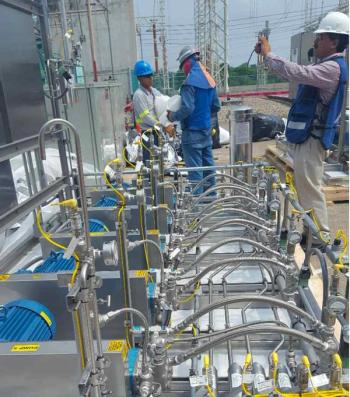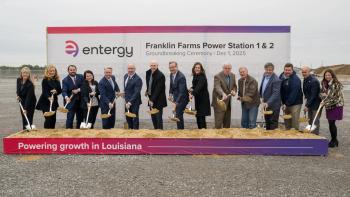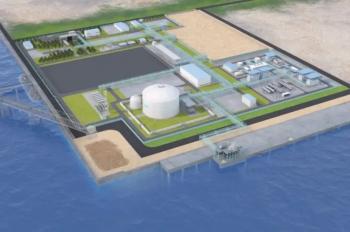
ASME LAUNCHES INDIAN GAS TURBINE SHOW
INDIA HAS BUILT UP A COMMUNITY OF GAS TURBINE DESIGNERS AND DEVELOPERS THAT ARE NOW MOVING ON TO COMPONENT AND SUB-ASSEMBLY DESIGN
In numbers, the one-day ASME International Gas Turbine Institute (IGTI) India 2012 show may appear modest. It attracted the presentation of 90 papers and a little over 150 attendees. But this marked the launch year for the show and the organizers claimed success. They are not declaring victory yet. That would come when the full potential for gas turbine development is reflected in the scope of the show.
India’s gas turbine industry is very much a work in progress. Companies such as Bharat Heavy Electricals Ltd. (BHEL) supply E-class gas turbines as licensees. Not much progress has been made in developing a world-class Indian-made gas turbine. The Chief Scientific Advisor to the government of India, V.K. Saraswat, in his keynote speech at the show, described how the indigenous gas turbine has not progressed to include advanced features, such as single crystal blades and complex cooling geometries.
However, India is slowly recognizing the environmental benefits of gas-fired power and is beginning to use more gas turbines. Though India has to import gas to meet additional needs, there has been positive news about gas reserves in the Krishna-Godavari river basin. There is talk of shale gas in India although more studies need to be done before declaring them substantial.
More importantly, what India has built up over the last ten years is a community of gas turbine designers and developers; engineers who started doing low-end work for big OEMs but have moved on quickly to component design and more complex jobs such as sub-assembly design. And ASME/IGTI, as the premier show for the gas turbine community, may well be the vehicle needed to propel the Indian gas turbine community to new heights.
Genesis of the India show
In fact, those who have taken the lead to put up the show came to a similar conclusion during the 2011 ASME/IGTI show in Vancouver. They noted that Indians were presenting more papers and wondered if that fact could be leveraged to organize an IGTI event on the sub-continent, said Joseph Machnaim, the conference chair who works for GE Aviation. Dilip Ballal, gas turbine expert and recent winner of the Tom Sawyer Award, goaded a few in that direction. This acted as the genesis of the India show. Unfortunately, Ballal passed away in November 2012, barely a week before the event began in Mumbai.
Machnaim says the ASME Gas Turbine India community can evolve into a group that should build on its design-development expertise into supporting a broader gas turbine industry, which may include designing, manufacturing and using state-of-the-art gas turbines. The next show is December 4 to 6, 2013, in Bangalore.
Creep behavior
Half the 90 papers presented were from India, with the rest originating from companies and institutions in China, South East Asia and the Middle East, including Iran. Though Indian academic and government research institutions such as the Indian Institutes of Technology and the Gas Turbine Research Establishment in Bangalore contributed many authors, many local firms registered their presence, too. GE India and Ansys Fluent India presented papers, for example, as well as independent design and development companies such as Infotech Enterprises Ltd. and Geometric Ltd.
Infotech Enterprises is an IT Services firm that provides engineering solutions, including product development and lifecycle support, process, network and content engineering to global companies. With over 10,000 employees, it works in energy, aerospace, consumer, medical and oil and gas. It has a joint venture with UTC and supported in the turbofan engine project.
One of the most interesting presentations came from Kotur S. Raghavan of Infotech Enterprises Ltd. (Hyderbad). He covered “Investigations Into Creep Behavior of Gas Turbine Component Assemblies.”
Raghavan notes in the paper that two approaches are normally used in the GT assembly process. There are the threaded fasteners, such as bolt and nut, as well as shrunk-fit or interference-fit assemblies. In the high-temperature regions of the gas turbines, the effect of creep on the integrity of such fastening arrangements needs to be assessed at the design stage.
One problem commonly faced pertains to lack of creep data which would facilitate detailed nonlinear analysis. The available data invariably exhibit scatter. Raghavan’s paper offers a design approach. It presents parametric studies and illustrates how creep curves are chosen so that both primary and secondary stages are accounted for. The coefficients are selected to meet design needs.
His studies have established the need for rigorous creep analysis of components having interference fits or threaded fasteners. Once the operational requirements are known, the approach presented helps in material selection.
Another interesting paper came from Geometric India, an IT services firm that serves a range of industries including energy, medical and machine tool. Entitled, “Voxelbased Approach for Computation and Optimization of Unoccupied Space in CAD Assemblies,” by Saikrishna Swamy, Rahul Rajadhyaksha and Nabarun Paul of Geometric Limited, it discussed a design technique for use primarily in aerospace where space and weight need to be optimized.
The technique is based on voxelization or volumization of 3D CAD models to compute the volume space occupied by an assembly and its components and identify void spaces between the components in an assembly. A voxel (volumetric picture element) represents a value on a regular grid in three-dimensional space.
The volume space is computed by fitting a voxel grid enclosing the 3D model with a uniform number of voxels along coordinate axes. The voxels are examined to identify whether there is material (or no material) and classify them as inside (material) or outside (no material) voxels and are grouped into finite regions.
Once the model is discretized, the output can be post-processed to generate data for various applications — computing the wrap volume or consumed space of the complete assembly, identifying significant void spaces in the assembly and so on.
A wrap volume is the volume of the package which would result if we hypothetically wrap the model under consideration with wrapping-packaging paper. Consumed-space is different from the material volume in that it includes additional space due to voids in the model, small inaccessible spaces, and so on.
The approach is useful for design improvements through optimization of void spaces between components depending on the related use cases.
Author:
Kalyan Kalyanaraman
Newsletter
Power your knowledge with the latest in turbine technology, engineering advances, and energy solutions—subscribe to Turbomachinery International today.





